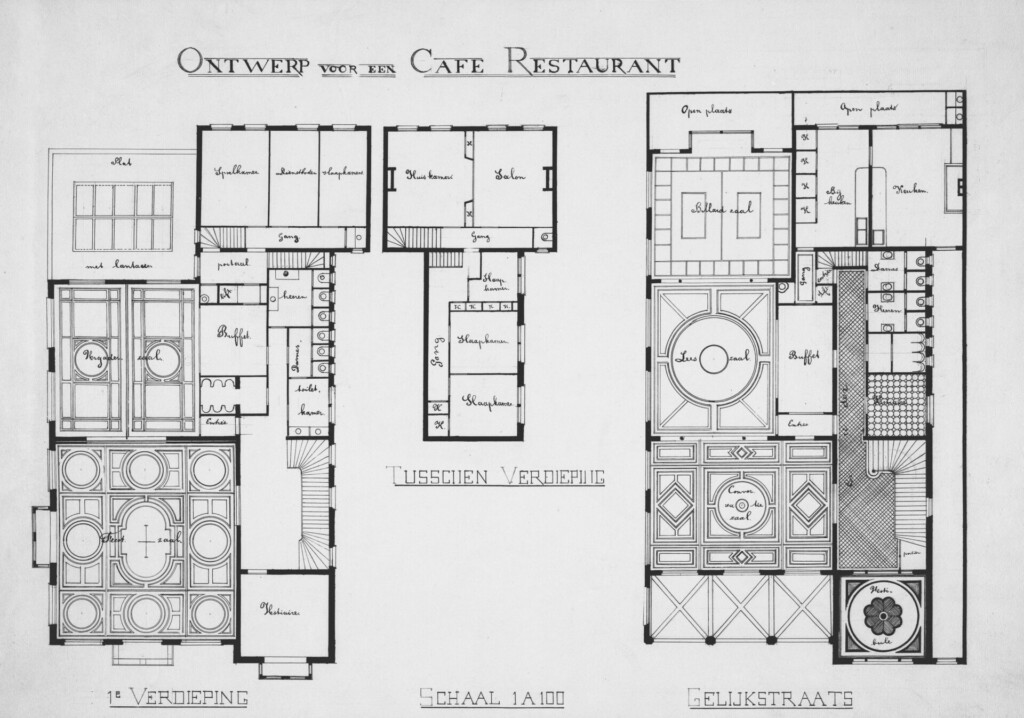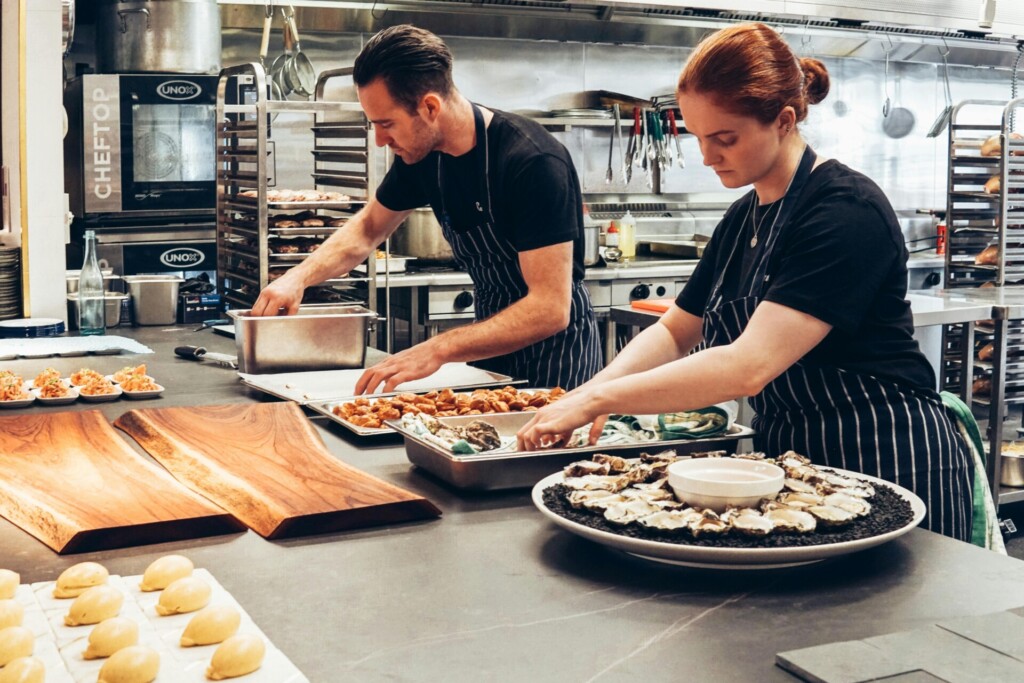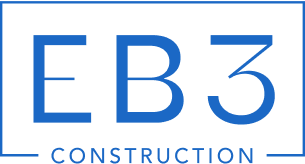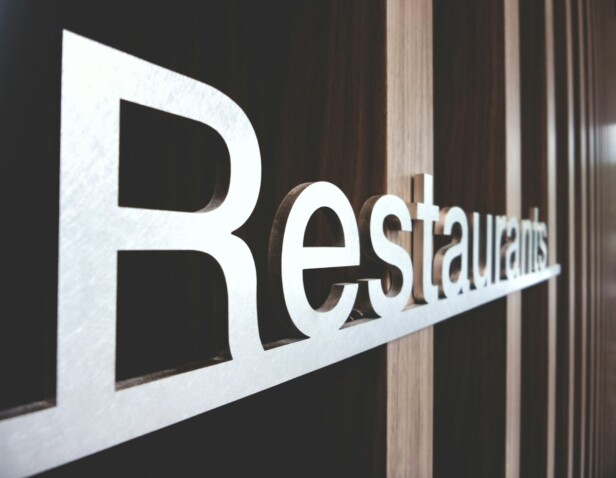Restaurant owners in The Woodlands face unique construction challenges when updating their establishments. Market conditions shift constantly, customer expectations evolve, and aging infrastructure demands attention to maintain competitive positioning.
We support hospitality projects through commercial remodeling, tenant improvements, and comprehensive renovations that address both operational needs and aesthetic goals. Our work spans everything from fast-casual restaurants requiring efficient service flow to bars needing atmospheric lighting and design-build solutions for multi-tenant arrangements.
Which Renovation And Build-Out Services Fit Restaurants In The Woodlands?

We handle comprehensive tenant improvements that transform commercial spaces into functional restaurant environments. Our tenant build-outs address everything from structural modifications to finishing details. Restaurant renovations can completely reconfigure existing layouts or update specific areas to meet current operational needs.
Commercial Remodeling Solutions
Commercial remodeling projects allow us to reconfigure space according to your restaurant’s specific requirements. We construct new areas within existing footprints and alter floor plans to improve functionality. Space reconfiguration creates better traffic patterns and maximizes seating capacity while maintaining code compliance.
Our teams change the layout and atmosphere through strategic design modifications. We handle both cosmetic updates and structural changes that impact how customers move through your space. These modifications can dramatically improve the dining experience and operational efficiency.
Build-Out Configuration Options
Retrofit projects update existing restaurant spaces with modern systems and finishes. We work within current structural constraints to maximize improvements without full reconstruction. These projects often focus on kitchen upgrades, dining area refreshes, and infrastructure updates.
Expansions add square footage to existing restaurants through adjacent space acquisition or structural additions. We coordinate with property owners and navigate zoning requirements to increase your restaurant’s capacity. Single-user buildouts create dedicated spaces designed specifically for your restaurant concept and operational needs.
Multi-tenant arrangements require careful coordination with shared building systems and adjacent businesses. We manage construction schedules to minimize disruption to neighboring tenants while completing your project efficiently.
Construction And Design Approaches
Design-build services integrate architectural planning with construction execution under our single-source management. This approach streamlines decision-making and reduces project timelines. We coordinate directly with architects and designers to ensure buildability and cost control throughout the design process.
General contracting services manage construction when you provide completed design documents. We coordinate subcontractors, suppliers, and construction sequences to deliver your project on schedule. Our project managers maintain daily oversight of all construction activities and quality control measures.
Interior Design And Finishing
Interior design support covers mood and lighting systems that create the desired dining atmosphere. We install custom lighting solutions that enhance both ambiance and functionality. Color schemes and material selections align with your brand identity while meeting durability requirements for commercial use.
Furniture integration includes built-in seating, custom millwork, and dining area configurations. We coordinate furniture delivery and installation with construction schedules. Shelving and storage solutions maximize back-of-house efficiency while maintaining clean sight lines in dining areas.
Brand-aligned finishes ensure your space reflects your restaurant’s unique character and market positioning. We source materials that support your brand story while meeting commercial performance standards.
Kitchen Layout And Equipment Coordination
Kitchen equipment installation focuses on creating efficient work zones that support your menu and service style. We coordinate with equipment suppliers to ensure proper placement and utility connections. Our teams plan for adequate ventilation, drainage, and electrical capacity based on your specific equipment requirements.
Flow optimization reduces staff movement and eliminates bottlenecks during peak service periods. We design prep areas, cooking stations, and service windows to support smooth operations. Storage placement and equipment positioning maximize kitchen productivity while maintaining health code compliance.
How Does The Restaurant Renovation Process Run From Pre-Construction To Closeout?
The restaurant renovation process follows a structured sequence that begins with comprehensive pre-construction planning. We define the project scope, establish realistic schedules, and set budget parameters that align with your operational goals. During this phase, our teams conduct thorough site assessments to evaluate existing conditions, utilities, and structural elements. These early evaluations help us identify potential challenges and coordinate work with local building requirements and zoning restrictions.
Design and architecture work occurs simultaneously with pre-planning activities. We optimize customer flow patterns through strategic seating arrangements and dining area layouts. Kitchen zones receive particular attention to maximize workflow efficiency between prep areas, cooking stations, and service windows. Material selection and interior finishes align with your brand identity while meeting durability standards for commercial food service environments.
Permits And Regulatory Coordination
Permit acquisition and regulatory approvals represent a critical phase that we handle systematically. Construction permits, zoning approvals, and health department clearances must be secured before work begins. We submit detailed plans to municipal authorities and coordinate with fire marshals and health inspectors to ensure compliance with food service regulations. This process typically requires 2-4 weeks depending on local jurisdictions and project complexity.
Timing coordination prevents delays by scheduling permit reviews alongside design finalization. We maintain regular communication with regulatory officials to address questions or modifications promptly. This proactive approach keeps projects moving forward while ensuring all safety and compliance standards are met from the outset.
Construction Execution And Subcontractor Management
Construction phase execution requires careful subcontractor coordination across multiple trades. Electrical work begins with power distribution upgrades and kitchen equipment circuits. Plumbing installation includes grease traps, dishwasher connections, and specialized drainage systems required for commercial kitchens. HVAC systems receive priority attention to ensure proper ventilation, temperature control, and code compliance for food preparation areas.
Interior build-out tasks follow utility installations and include flooring, wall finishes, ceiling treatments, and lighting installations. We sequence work to minimize conflicts between trades and maintain consistent progress. Subcontractor scheduling prevents bottlenecks while ensuring quality standards throughout each phase of construction.
Project Management And Communication Protocols
A dedicated project manager oversees daily operations and maintains regular client communication throughout the renovation process. Weekly progress updates include schedule status, budget tracking, and upcoming milestone coordination. Safety protocols remain paramount with daily inspections, hazard identification, and corrective action implementation to prevent accidents and delays.
Documentation and progress reporting help owners stay informed while allowing us to address concerns before they impact schedules. Regular site meetings with key stakeholders ensure alignment on design decisions, change orders, and final inspection preparation. This systematic approach maintains workflow efficiency while delivering projects on time and within budget parameters.
What Codes, Permits, And Safety Requirements Apply To Restaurant Renovations?

Restaurant renovations in The Woodlands trigger multiple regulatory layers that we navigate systematically. Commercial food service projects must comply with the International Building Code adopted by Texas, along with local amendments specific to Montgomery County and The Woodlands Township. We handle the coordination of construction permits through municipal offices, ensuring each aspect of the build meets current standards for structural integrity, fire safety, and occupancy classifications.
Zoning compliance forms another critical component we address early in restaurant projects. The Woodlands maintains specific commercial zoning districts with unique requirements for food service establishments, particularly regarding parking ratios, signage restrictions, and operational hours. We work directly with township planners to confirm zoning conformance and secure necessary variances when project goals require flexibility from standard requirements.
Building Code Requirements For Food Service Spaces
We ensure restaurant renovations meet specialized building code provisions that apply specifically to commercial food preparation areas. Kitchen spaces require enhanced ventilation systems that comply with the International Mechanical Code, including makeup air requirements that can significantly impact HVAC design and installation costs. Fire suppression systems in commercial kitchens must meet National Fire Protection Association standards, with automatic extinguishing systems required for cooking equipment that produces grease-laden vapors.
Accessibility compliance under the Texas Accessibility Standards affects restaurant layouts, particularly restroom facilities, entrance configurations, and dining area circulation paths. We coordinate these requirements during the design phase to avoid costly modifications during construction. Electrical systems must accommodate the high-demand equipment typical in commercial kitchens, including proper grounding, circuit protection, and emergency lighting systems that meet National Electrical Code requirements.
Health Department Permits And Food Safety Standards
We secure health department permits through the Houston Health Department or Montgomery County Health Authority, depending on the specific location within The Woodlands. These permits require detailed plan submissions showing equipment layouts, food preparation workflows, and sanitation facilities. Health inspectors review proposed kitchen configurations, storage areas, and waste management systems before approving construction plans.
Food safety considerations drive many construction decisions, from surface materials in food preparation areas to handwashing station placement and wastewater disposal systems. We coordinate with health officials during the design phase to ensure compliance with the Texas Food Establishment Rules, which govern everything from wall and ceiling finishes in food prep areas to the specifications for grease traps and floor drainage systems.
Mechanical, Electrical, And Plumbing System Compliance
HVAC systems in restaurant renovations must meet demanding performance standards that we coordinate with specialized mechanical contractors. Commercial kitchen ventilation requires precise calculation of exhaust volumes, makeup air requirements, and fire safety integration. We ensure these systems comply with both the International Mechanical Code and local fire marshal requirements, including proper duct construction and automatic fire suppression integration.
Plumbing installations for restaurants involve complex requirements beyond standard commercial applications. We coordinate installation of grease interceptors, specialized floor drains, and high-capacity hot water systems that meet health department specifications. Electrical systems must accommodate heavy equipment loads while maintaining proper separation between food preparation and electrical components, meeting both safety codes and operational efficiency requirements.
Safety Planning And Risk Management
We implement comprehensive safety planning that addresses both construction phase risks and long-term operational considerations. Site safety planning during construction includes specialized protocols for working around existing restaurant operations, managing dust and debris control, and maintaining emergency egress paths. Our safety coordinators conduct regular inspections and maintain documentation required by both OSHA standards and local building officials.
Ongoing safety management extends beyond construction completion through coordination with fire marshals and health inspectors during final approvals. We schedule and coordinate all required inspections, from rough-in mechanical and electrical work through final health department approvals, ensuring each system meets operational standards before restaurant opening.
How Should Owners Scope A Restaurant Build-Out Or Tenant Finish In The Woodlands?
Restaurant build-out planning requires strategic thinking about your specific operational needs and brand vision. Every restaurant functions differently based on menu type, service style, and customer expectations. Define your space requirements early to establish a clear foundation for design and construction decisions.
Define Tenant-Specific Requirements And Space Functions
Start by evaluating how your restaurant will actually operate within the space. Fast-casual concepts require different kitchen layouts than full-service establishments. Counter service needs wide aisles and efficient queue management. Table service demands strategic server stations and accessible pathways between dining areas.
We analyze traffic patterns during peak hours to optimize space allocation. Kitchen size typically ranges from 25-35% of total square footage depending on menu complexity. Storage areas need adequate sizing for inventory turnover rates. Back-of-house functions like offices and break rooms require proper placement to support daily operations without disrupting customer areas.
Customize Physical Elements For Brand And Function
Ceiling height affects both atmosphere and mechanical system installation. Standard commercial spaces offer 9-12 foot ceilings, while exposed systems may add visual appeal for industrial concepts. Door placement controls customer flow and staff efficiency. Wide entry doors accommodate high-volume periods and accessibility requirements.
Wall configuration shapes dining room acoustics and kitchen workflow. We customize layouts to reduce noise transfer between prep areas and dining spaces. Partition walls can separate private dining areas or create distinct zones for different service styles. Floor plan changes often involve relocating utilities and ensuring proper ventilation for each area.
Plan Seating Layout And Customer Flow Optimization
Seating arrangements directly impact revenue per square foot and customer satisfaction. Standard restaurant design allocates 12-15 square feet per seat including circulation space. Bar seating requires different spacing than booth configurations. High-top tables work well for quick-turn concepts while comfortable booths suit longer dining experiences.
Customer flow begins at the entrance and extends through ordering, seating, and exit patterns. We design clear pathways that prevent bottlenecks during busy periods. Entry areas need adequate space for waiting customers without blocking service areas. Exit routes should be obvious and unobstructed to maintain smooth operations throughout peak times.
Select Design-Build Method Or General Contracting Approach
Design-build provides integrated project delivery with single-point responsibility from concept through completion. This approach typically reduces timeline by 33% compared to traditional methods according to construction industry research. Design and construction teams work together from the beginning, identifying potential issues before they become costly problems.
General contracting requires separate contracts with architects and builders. This approach offers more flexibility in team selection but requires careful coordination between multiple parties. Budget control can be more challenging when design costs aren’t aligned with construction realities early in the process. Consider your experience managing complex projects when evaluating delivery methods.
We recommend design-build for restaurant projects because kitchen efficiency and code compliance require tight coordination between design and construction phases. Mechanical systems, equipment placement, and permit requirements are better managed when all team members understand both design intent and construction constraints from project start.
Establish Realistic Schedule And Budget Parameters
Restaurant build-out timelines typically range from 8-16 weeks depending on scope and permitting requirements. Fast-track projects may compress schedules but require early equipment ordering and permit approvals. Site evaluation reveals potential delays from utility upgrades or structural modifications that impact both timeline and budget.
Budget allocation for restaurant tenant finish projects averages $150-300 per square foot in The Woodlands market. Kitchen equipment and installation account for 40-50% of total costs. Dining area finishes represent 25-30% while mechanical systems require 15-20% of the budget. We maintain contingency reserves of 10-15% to address unforeseen conditions during construction.
Supplier coordination affects both cost control and schedule adherence. Early equipment selection locks in pricing and delivery schedules. We coordinate with vendors to ensure installation timing aligns with construction milestones. Clear communication with all suppliers prevents delays that could push back opening dates and increase carrying costs.
Conclusion And Next Steps

A restaurant renovation in The Woodlands TX requires careful planning, code compliance, and a structured process. Success depends on coordinating multiple elements from initial site assessment through final inspection. We coordinate these complex projects to ensure every aspect meets local requirements and client expectations.
Define your project goals, gather site details, and establish realistic budget parameters and timelines. Schedule a pre-construction review to align project scope, design requirements, permits, and delivery method. This early coordination prevents costly delays and ensures your restaurant renovation meets both operational needs and regulatory standards. Contact EB3 Construction to discuss your restaurant project requirements.




